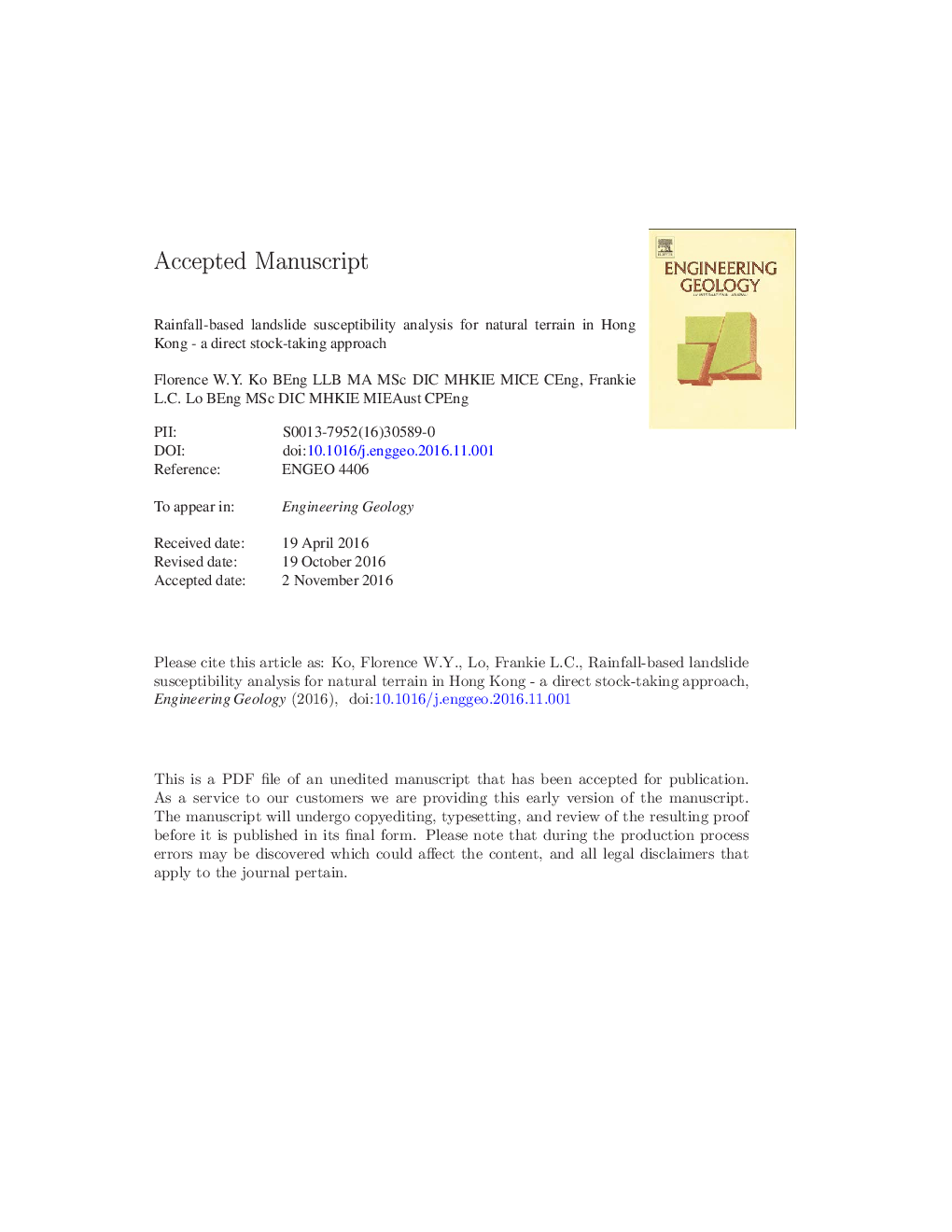| Article ID | Journal | Published Year | Pages | File Type |
|---|---|---|---|---|
| 8916046 | Engineering Geology | 2016 | 29 Pages |
Abstract
The steep natural terrain in Hong Kong, combined with deep weathering profile and high seasonal rainfall, is highly susceptible to rain-induced, shallow landslides. With over 35Â years of practice in landslide risk management, Hong Kong has progressively built up a series of important databases that facilitate conducting novel technical development work related to natural terrain landslides. Amongst others, there is a dense network of raingauges that provides state-of-the-art rainfall records, a high-resolution inventory of historical landslides and a LIDAR-based digital terrain model for the natural terrain. This paper discusses the previous landslide susceptibility map for natural terrain in Hong Kong and its limitations, and then presents a new territory-wide rainfall-based landslide susceptibility analysis that takes cognizance of the effects of slope angle and bedrock geology. The year-based susceptibility model correlates landslide density with normalized maximum rolling 24-hour rainfall. Twenty-four terrain units, comprising eight classes of slope angle and three classes of bedrock geology are considered. For each terrain unit, a year-based correlation between normalized maximum rolling 24-hour rainfall and landslide density is obtained. Global adjustment factors are recommended to transform the year-based correlation to the storm-based correlation. The potential applications of the outcomes of the landslide susceptibility analysis are also discussed.
Related Topics
Physical Sciences and Engineering
Earth and Planetary Sciences
Geotechnical Engineering and Engineering Geology
Authors
Florence W.Y. (Senior Geotechnical Engineer), Frankie L.C. (Geotechnical Engineer),
